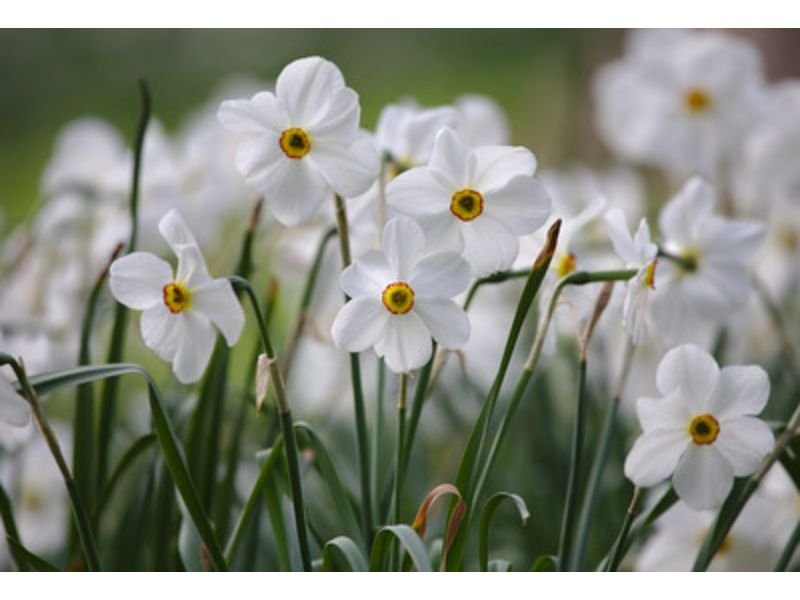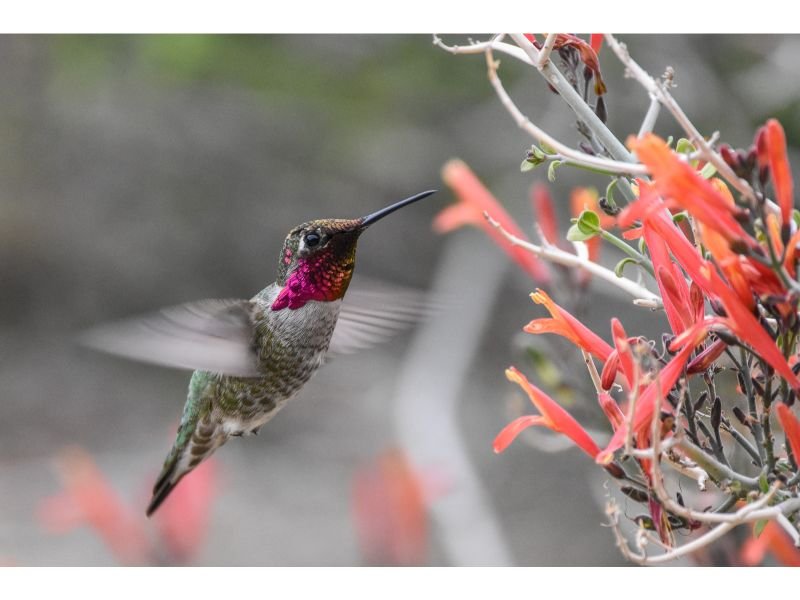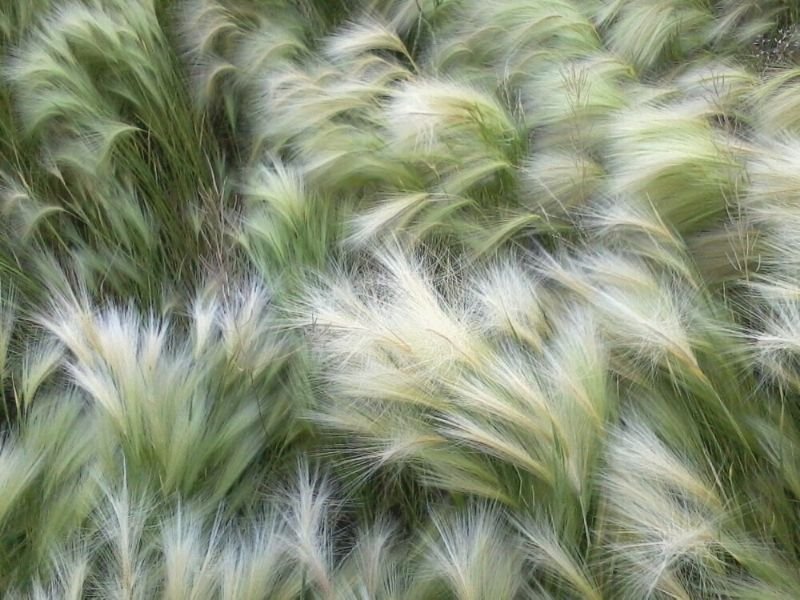The Zinnia Lilliput is a small, compact variety of the popular Zinnia flower. It is known for its bright, vibrant colors and its ability to produce an abundance of blooms throughout the growing season. The flowers of the Zinnia Lilliput are small, usually around 2 inches across, but they make up for their size with their large numbers and variety of hues.
The Zinnia Lilliput is a popular choice among gardening enthusiasts because of its easy care requirements and long blooming period. It is drought tolerant and can thrive in a wide range of soil types, making it an ideal choice for gardeners of all skill levels. Additionally, the Zinnia Lilliput is a great option for cut flowers, as the blooms are long-lasting and can be used in bouquets, dried arrangements, and other floral displays.
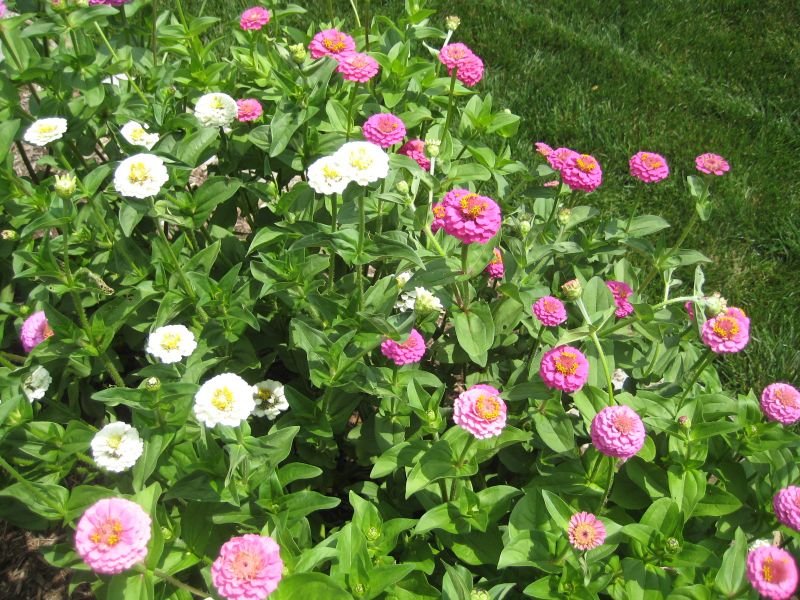
One of the most beautiful features of Zinnia Lilliput is its wide range of colors, from bright yellow and orange to deep red and purple. This makes it a great option for adding color and interest to any garden, whether you’re planting it in a flower bed, container, or as a border.
Table of Contents
Climate and Soil Requirements
The ideal climate for growing Zinnia Lilliput
The ideal climate for growing Zinnia Lilliput is warm and sunny. These plants prefer temperatures between 60-70°F (15-21°C) and require at least 6 hours of direct sunlight per day to thrive. They also prefer a relatively dry climate, as too much humidity can lead to fungal diseases. Zinnia Lilliput are also frost-tender so it is best to plant them after the last frost date in your area.
The type of soil that is best for the plant

In terms of soil, Zinnia Lilliput prefer well-draining soil that is rich in organic matter. They can tolerate a wide range of soil pH levels, but prefer a slightly acidic to neutral pH of 6.0-7.0. The soil should be kept moist but not waterlogged to prevent root rot. Adding compost or other organic matter to the soil can help improve its overall health and fertility.
It is also important to note that Zinnia Lilliput prefer a location with good air circulation to minimize the risk of fungal disease and to ensure that their flowers will dry quickly after a rain. This can be achieved by planting them in an area with good sunlight and wind flow, or by spacing them out enough to allow for good air circulation between the plants.
In summary, Zinnia Lilliput prefer a warm, sunny climate and well-draining soil that is rich in organic matter, that can provide the optimal growing conditions for these beautiful flowers.
Planting and Care
The best time to plant Zinnia Lilliput
The best time to plant Zinnia Lilliput is after the last frost date in your area. These plants can be started from seed or seedlings.
Here is the map of Date of the Earliest First freeze for the United States in the last 30 years from www.weather.gov.

And here the map showing the last frost date for each region in The USA.

How to plant the seeds or seedlings
To plant from seed, you can direct sow them in the ground or start them indoors 4-6 weeks before the last frost date. Sow the seeds in well-draining soil, and keep them moist but not waterlogged. Once the seedlings have emerged, thin them out to about 8-12 inches apart.
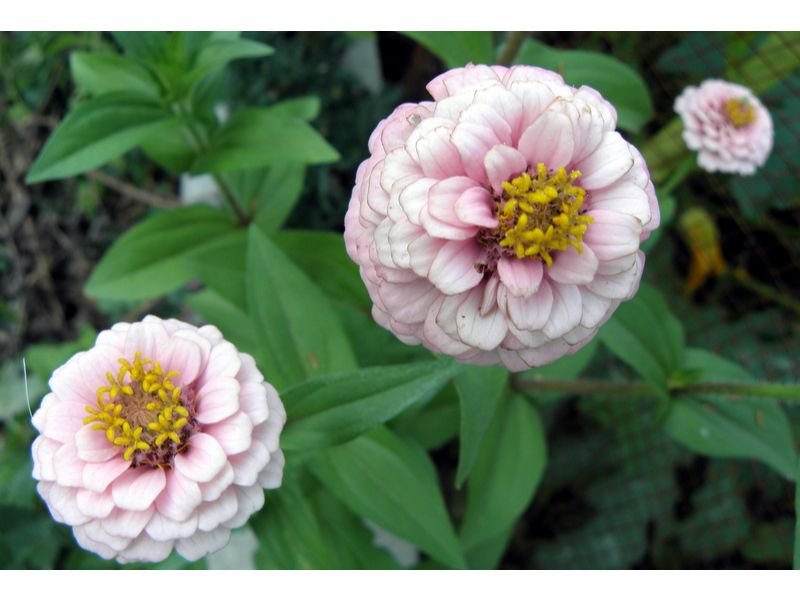
To plant seedlings, choose plants that are healthy and stocky. Plant them at the same depth as they were in their original container, and space them 8-12 inches apart. Water the seedlings well after planting and be sure to keep the soil consistently moist until they become established.
Watering, fertilizing, and pruning
When it comes to care, Zinnia Lilliput are relatively low maintenance. They require regular watering, especially during dry spells. However, it is important to avoid over-watering, as this can lead to root rot. Water the plants at the base of the stem, and avoid getting water on the leaves, which can encourage fungal diseases.
Fertilizing is not necessary for Zinnia Lilliput, but you can add a balanced fertilizer to the soil when planting to give them a good start. Otherwise, you can provide them with a top-dressing of compost or other organic matter during the growing season.
Pruning is not necessary for Zinnia Lilliput, but if you want to encourage bushier growth and more blooms, you can pinch back the tips of the plants when they are about 6 inches tall. This will encourage the plant to branch out and produce more flowers.
In summary, Zinnia Lilliput are easy to plant, whether from seed or seedlings, and they require regular watering, but not much else in terms of care. They can be pruned to encourage bushier growth, but it’s not a necessary step. With proper care, you can enjoy an abundance of vibrant, colorful blooms all season long.
Pest and Disease Control
Common pests and diseases that can affect Zinnia Lilliput
Zinnia Lilliput are relatively hardy plants, but they can be affected by a few common pests and diseases.
One of the most common pests that can affect Zinnia Lilliput is the aphid. These small, pear-shaped insects can be green, yellow, brown, or black and they suck the sap from the leaves and stems of the plants, causing them to become wilted and discolored. To prevent aphids, make sure to provide good air circulation around your plants and avoid overcrowding. If you do find aphids, you can knock them off the plants with a strong spray of water, or use an insecticidal soap or neem oil spray.
Another common pest that can affect Zinnia Lilliput is the spider mite. These tiny pests can cause yellow stippling on the leaves and can quickly defoliate a plant if left untreated. To prevent spider mites, make sure to provide good air circulation around your plants and avoid overcrowding. If you do find spider mites, you can use a pesticide or insecticidal soap.
In terms of diseases, one of the most common that can affect Zinnia Lilliput is powdery mildew. This fungal disease can cause a white, powdery coating on the leaves, which can cause them to become distorted and discolored. To prevent powdery mildew, make sure to provide good air circulation around your plants and avoid overcrowding. If you do find powdery mildew, you can use a fungicide or neem oil spray.
How to prevent and treat these issues
To prevent any pest and disease issues, it is also important to keep the area around your plants free of debris, as well as to practice good hygiene when handling the plants. Clean up any fallen leaves or flowers, and make sure to disinfect your tools before and after using them.
In summary, Zinnia Lilliput are relatively hardy plants, but they can be affected by common pests and diseases like aphids, spider mites, and powdery mildew. The best way to prevent these issues is by providing good air circulation, avoiding overcrowding and keeping the area around your plants clean. If you do find any pests or diseases, there are several effective ways to treat them, such as using pesticides or fungicides.
Harvesting and Using the Flowers
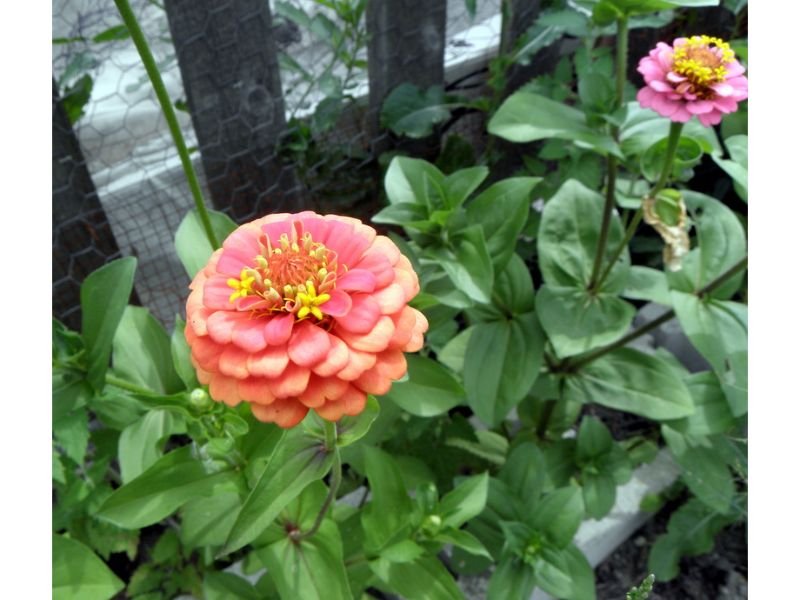
Zinnia Lilliput flowers are ready to harvest when they are fully open and the petals are firm to the touch. This usually occurs about 6-8 weeks after planting, depending on the climate and growing conditions. It’s best to harvest the flowers in the morning when they are fully hydrated and before the heat of the day causes the petals to wilt.
When harvesting, use sharp scissors or pruning shears to cut the stem, leaving at least two sets of leaves on the plant. This will encourage the plant to continue producing more blooms.
How to use the flowers
There are many ways to use the flowers of Zinnia Lilliput. They are great for cut flowers, as they are long-lasting and come in a wide variety of colors. They can be used to create beautiful bouquets, floral arrangements, and other displays.
Additionally, Zinnia Lilliput flowers can be dried for later use. To dry flowers, cut the stems when the blooms are fully open and hang them upside down in a dry, well-ventilated area out of direct sunlight. Once the petals are dry, they can be used in dried flower arrangements, potpourri, or as a natural dye.
Lastly, Zinnia Lilliput flowers can also be used to make a homemade tea by steeping the petals in hot water. This tea has a sweet and slightly spicy flavor, and can be enjoyed hot or iced.
In summary, Zinnia Lilliput flowers are ready to harvest when they are fully open and the petals are firm to the touch. They can be used fresh as cut flowers, dried for later use, or even used to make a homemade tea. With their vibrant colors and long-lasting blooms, Zinnia Lilliput flowers are sure to add beauty and interest to any garden.
Conclusion
In conclusion, Zinnia Lilliput is a small, compact variety of the popular Zinnia flower, known for its bright, vibrant colors and its ability to produce an abundance of blooms throughout the growing season. It is a popular choice among gardening enthusiasts because of its easy care requirements and long blooming period.
When it comes to growing Zinnia Lilliput, it’s important to provide them with a warm, sunny climate and well-draining soil that is rich in organic matter. They require regular watering, but not much else in terms of care. They can be pruned to encourage bushier growth, but it’s not a necessary step. Pest and disease control can be achieved by providing good air circulation, avoiding overcrowding and keeping the area around your plants clean.
Zinnia Lilliput are also great for cut flowers, as they are long-lasting and come in a wide variety of colors. They can be used to create beautiful bouquets, floral arrangements, and other displays. Additionally, Zinnia Lilliput flowers can be dried for later use or even used to make a homemade tea.
Overall, Zinnia Lilliput are a versatile, easy-to-grow flower that can add beauty and color to any garden. We encourage readers to try growing them in their own gardens and to experiment with different ways of using the beautiful blooms.
FAQ
1. How long do Zinnia Lilliput flowers last?
Zinnia Lilliput flowers can last up to several weeks when cut and placed in a vase with fresh water. The blooming period of Zinnia Lilliput is long, usually several weeks to a couple of months.
2. How can I use Zinnia Lilliput flowers in my garden?
Zinnia Lilliput flowers can be used in a variety of ways in your garden. They make great cut flowers and can be used in bouquets, floral arrangements, and other displays. They can also be dried for later use in dried flower arrangements, potpourri, or as a natural dye.
3. How can I encourage bushier growth and more blooms in my Zinnia Lilliput?
To encourage bushier growth and more blooms in your Zinnia Lilliput, you can pinch back the tips of the plants when they are about 6 inches tall. This will encourage the plant to branch out and produce more flowers. Additionally, providing adequate space between plants, good air circulation, and regular deadheading can also encourage bushier growth and more blooms.
4. How can I propagate Zinnia Lilliput?
Zinnia Lilliput can be propagated by seed or by cuttings. To propagate by seed, sow them in well-draining soil, and keep them moist but not waterlogged. To propagate by cuttings, take stem cuttings from healthy, established plants and root them in a mixture of sand and peat moss.
5. How to deal with wilting and yellowing leaves in Zinnia Lilliput?
Wilting and yellowing leaves in Zinnia Lilliput can be caused by a variety of factors such as over-watering, under-watering, pests, or diseases. To address wilting and yellowing leaves, first check the soil moisture and adjust watering accordingly. Also, check for any signs of pests or diseases and take appropriate action. If the problem persists, it may be best to remove the affected plants to prevent the spread of the issue.
6. Can Zinnia Lilliput be grown in pots?
Yes, Zinnia Lilliput can be grown in pots, as long as the pot is large enough and has good drainage. Make sure to use well-draining potting soil and provide the plants with adequate sunlight and water. Keep in mind that potted plants will dry out faster than those in the ground, so you may need to water more frequently.
7. How to deal with pests and diseases organically?
To deal with pests and diseases in Zinnia Lilliput organically, you can use natural methods such as handpicking pests, using insecticidal soap or neem oil spray, and encouraging beneficial insects such as ladybugs and lacewings. Providing good air circulation, avoiding overcrowding and keeping the area around your plants clean can also help prevent pest and disease issues.
8. How to encourage more flowers in Zinnia Lilliput?
To encourage more flowers in Zinnia Lilliput, deadhead spent blooms regularly, pinch back the tips of the plants when they are about 6 inches tall, and provide adequate space between plants, good air circulation and regular watering. Fertilizing with a balanced fertilizer can also provide the plant with the necessary nutrients to produce more flowers.
9. What is the ideal spacing for Zinnia Lilliput?
The ideal spacing for Zinnia Lilliput is 8-12 inches apart. This allows for good air circulation, which can help prevent fungal diseases and also provides enough space for the plant to grow and produce more flowers.
10. Can you deadhead Zinnia Lilliput?
Yes, you can deadhead Zinnia Lilliput by removing spent blooms. Deadheading helps to encourage the plant to produce more flowers and also helps to prevent self-seeding. When deadheading, it’s best to use sharp scissors or pruning shears to cut the stem, leaving at least two sets of leaves on the plant.
11. How to deal with powdery mildew on Zinnia Lilliput?
To deal with powdery mildew on Zinnia Lilliput, make sure to provide good air circulation around your plants and avoid overcrowding. If you do find powdery mildew, you can use a fungicide or neem oil spray. Keep in mind that powdery mildew can be prevented by avoiding overhead watering, providing good air circulation and by removing infected leaves.
12. What is the ideal temperature range for Zinnia Lilliput?
The ideal temperature range for Zinnia Lilliput is between 60-70°F (15-21°C). These plants prefer warm weather and require at least 6 hours of direct sunlight per day to thrive. They also prefer a relatively dry climate, as too much humidity can lead to fungal diseases.
13. How to deal with aphids on Zinnia Lilliput?
Aphids can be dealt with by knock them off the plants with a strong spray of water or by using an insecticidal soap or neem oil spray. Additionally, encouraging beneficial insects such as ladybugs and lacewings, which feed on aphids, can help keep the population in check.
14. How to deal with spider mites on Zinnia Lilliput?
Spider mites can be dealt with by using a pesticide or insecticidal soap. Additionally, make sure to provide good air circulation around your plants and avoid overcrowding. Regularly checking for spider mites and taking action early can help prevent a population explosion.
15. Can Zinnia Lilliput be grown in a hydroponic system?
Yes, Zinnia Lilliput can be grown in a hydroponic system. Hydroponic systems provide plants with all the necessary nutrients and water through a closed-loop system, which can result in faster growth and higher yields. It’s important to make sure the hydroponic system is set up correctly, with the correct pH level and nutrient levels, as well as providing adequate light and temperature.
16. Are Zinnia Lilliput toxic to pets?
Zinnia Lilliput are not considered toxic to pets. However, as with any plant, it’s always best to keep an eye on your pets and make sure they’re not eating large amounts of any plant, as it could cause an upset stomach or other digestive issues.
17. Is it safe to eat Zinnia Lilliput flowers?
The petals of Zinnia Lilliput flowers are edible, and can be used to add color and flavor to salads, sandwiches, and other dishes. However, it’s important to make sure the flowers have not been treated with pesticides or other chemicals before consuming.
18. How do Zinnia Lilliput compare to other Zinnia species in terms of hardiness and disease resistance?
Zinnia Lilliput are considered to be one of the most disease-resistant and hardy Zinnia species. They’re also compact and easy to care for.
19. Are there any other related genus that are similar to Zinnia Lilliput in terms of appearance and care?
Zinnia Lilliput belong to the genus Zinnia, which comprises of around 20 species of annual and perennial plants. They are similar in terms of care and appearance, but differ in terms of size, color and time of blooming.
20. Can Zinnia Lilliput be used as a companion plant in a vegetable garden?
Zinnia Lilliput can be used as a companion plant in a vegetable garden. They can act as a trap crop, drawing pests away from other plants, and they also attract beneficial insects such as bees and butterflies which can help to pollinate your vegetable plants. Additionally, Zinnia Lilliput can add color and beauty to your vegetable garden while providing a habitat for beneficial insects.
21. How do the colors of Zinnia Lilliput flowers compare to other Zinnia species?
Zinnia Lilliput come in a wide range of colors, including pink, red, orange, yellow, white and purple. Some of the other Zinnia species have different color options and some have more limited color choices.
22. Are there any medicinal uses for Zinnia Lilliput?
Zinnia Lilliput have not been extensively studied for medicinal uses, but traditionally the petals have been used to make tea to help with digestion and to soothe sore throat.
23. How does the size of Zinnia Lilliput compare to other Zinnia species?
Zinnia Lilliput are a smaller cultivar of Zinnia and generally reach a height of 6-8 inches while some other species can grow up to 2-3 feet.
24. Can Zinnia Lilliput be used as a natural insect repellent in the garden?
Zinnia Lilliput have not been extensively studied for their ability to repel insects, but they can be used to attract beneficial insects such as bees and butterflies that can help to control pest populations in the garden.
25. Are there any variations or cultivars of Zinnia Lilliput available?
Yes, there are many different cultivars of Zinnia Lilliput available, with different colors, sizes, and growth habits. Some popular cultivars include ‘Crystal White’, ‘Crystal Orange’, and ‘Crystal Red’.

Gardening is my passion and growing plants indoors has always been a stress relief for me. Grow a banana tree in my apartment once (although failed to produce bananas).

